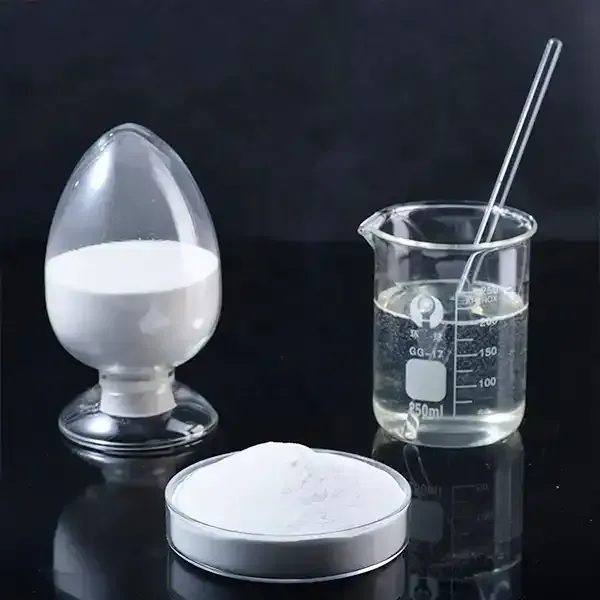Hydroxyethyl Cellulose An Overview
Hydroxyethyl cellulose (HEC) is a non-ionic, water-soluble polymer derived from cellulose, one of the most abundant natural polymers found in plant cell walls. HEC plays a crucial role in various industries, thanks to its unique properties and versatility. This article explores the significance, applications, synthesis, and properties of hydroxyethyl cellulose.
Properties of Hydroxyethyl Cellulose
HEC exhibits several key characteristics that make it an attractive compound for use in various formulations. Its water-soluble nature allows it to dissolve easily in cold and warm water, resulting in a clear, viscous solution. One of the most remarkable properties of HEC is its thickening ability, which is highly valued in formulations requiring viscosity control. The molecule's hydroxyethyl groups improve its solubility and enhance its film-forming abilities, contributing to the stabilization of emulsions and suspensions.
Another noteworthy property is its rheological behavior. HEC can significantly alter the flow and viscosity of liquid systems, making it applicable in industries such as cosmetics, pharmaceuticals, and food products. The viscosity of HEC solutions can be influenced by factors such as concentration, temperature, and shear rate, which allows formulators to tailor the properties to meet specific needs.
Synthesis of Hydroxyethyl Cellulose
The synthesis of hydroxyethyl cellulose involves the etherification of cellulose with ethylene oxide. This process typically occurs under alkaline conditions, wherein cellulose is reacted with ethylene oxide to introduce hydroxyethyl groups onto the glucose units of the cellulose molecule. The degree of substitution, which indicates the number of hydroxyethyl groups attached per anhydroglucose unit, can be controlled during synthesis, affecting the final properties of the HEC product.
The purity of HEC is paramount, and various methods, including precipitation, filtration, and drying, are employed to obtain high-quality polymer. The final product is generally a white or off-white powder that can be easily processed for various applications.
Applications of Hydroxyethyl Cellulose
hydroxyethyl cellulose

HEC has found widespread applications across multiple industries due to its unique properties. Here are some notable uses
1. Cosmetics and Personal Care Products HEC is frequently used in lotions, creams, shampoos, and gels as a thickening agent. Its gel-like consistency helps stabilize formulations, providing a desirable texture and enhancing the sensory experience of the product.
2. Pharmaceuticals In the pharmaceutical industry, HEC serves as a binder in tablet formulations, a thickener in suspensions, and a controlled-release agent in various drug delivery systems. Its biocompatibility and non-toxicity make it ideal for use in medicinal applications.
3. Food Industry HEC is increasingly utilized as a food additive due to its thickening and stabilizing properties. It is commonly found in sauces, dressings, and bakery products, where it improves texture and consistency.
4. Construction In construction, HEC is used as an additive in cement and mortar to enhance workability, water retention, and adhesion. This contributes to the overall strength and durability of building materials.
5. Agriculture HEC is also applied in agriculture as a thickener for agrochemical formulations, improving the adherence and distribution of pesticides and herbicides.
6. Oil and Gas In the oil and gas industry, HEC is employed as a viscosifier in drilling fluids, providing necessary suspension properties and promoting the efficient transport of drilled solids.
Conclusion
Hydroxyethyl cellulose is a versatile, multifunctional polymer that has garnered significant attention across various sectors. Its unique properties, including water solubility, viscosity, and film-forming capabilities, make it a valuable ingredient in a multitude of applications. As industries continue to innovate and seek sustainable solutions, HEC will likely play an essential role, driving advancements in product formulations and enhancing performance across the board. Its contribution to modern products exemplifies how natural polymers can be effectively harnessed to meet contemporary needs, promoting both efficiency and sustainability.
-
A Comprehensive Guide to Methyl Ethyl Hydroxyethyl Cellulose: Applications and Industry InsightsNewsNov.24,2025
-
Understanding Methyl 2 Hydroxyethyl Cellulose: Uses, Benefits & Industry InsightsNewsNov.24,2025
-
Hydroxyethyl Methyl Cellulose HEMC: Industrial Uses, Benefits & Future TrendsNewsNov.23,2025
-
HEMC Cellulose: Versatile & Sustainable Industrial Polymer | YoungcelNewsNov.23,2025
-
Methyl Hydroxyethyl Cellulose: Versatile Building Block for Industry & SustainabilityNewsNov.23,2025
-
CAS 9032 42 2: Understanding Polyvinyl Alcohol's Impact on Industry & SustainabilityNewsNov.22,2025




